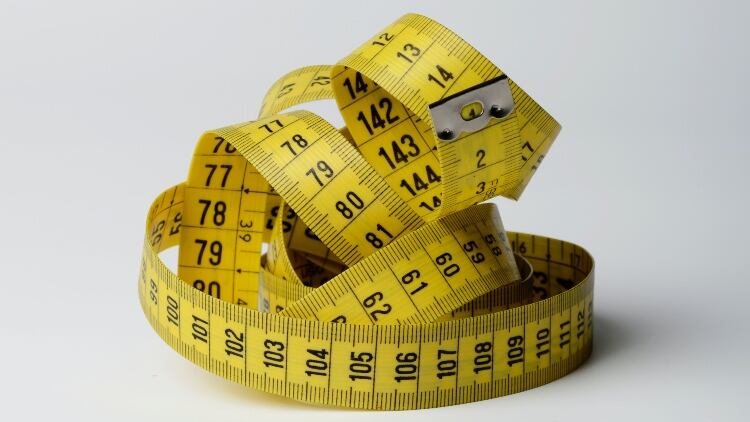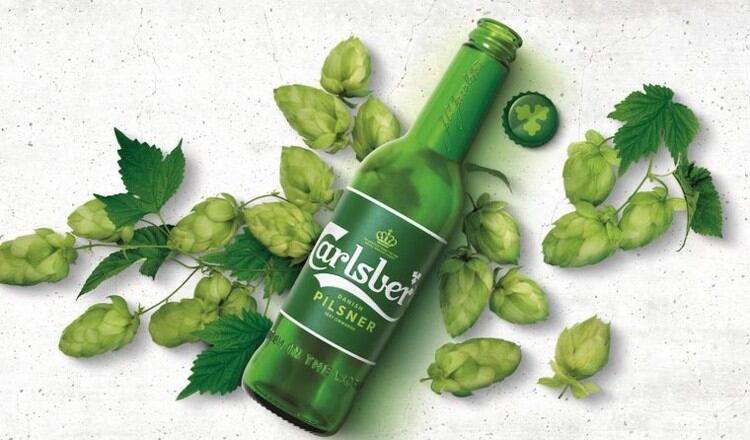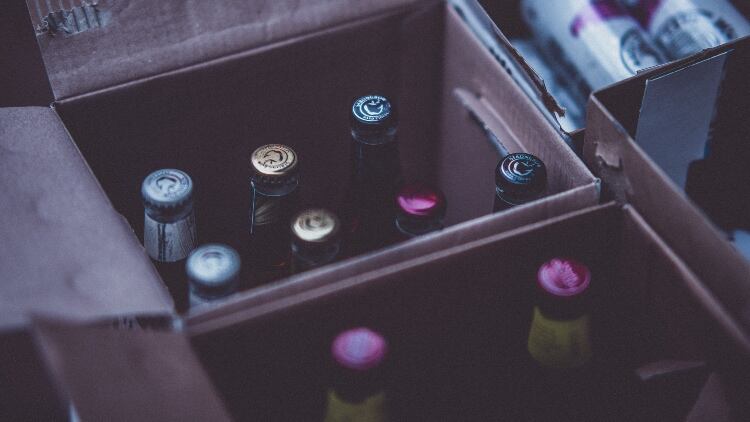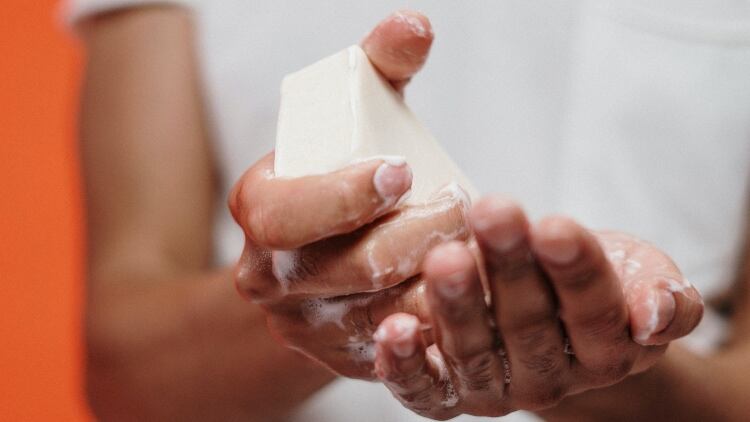Between an update from Prime Minister Boris Johnson on Sunday 10 May and a 50-page Covid-19 recovery strategy published the day after, the Government has now set its stall on how Britain will emerge from Covid-19 lockdown.
As reported by The Morning Advertiser (MA), “at least some” pubs and hospitality venues are slated to reopen under the third and final phase of the Government’s roadmap, which the nation will reach no earlier than 4 July if Johnson and co are satisfied that a series of criteria have been met.
However, when pubs do eventually welcome their parched public, they will be mandated to do so under a number of social distancing measures outlined in the Government’s plan including Public Health England (PHE) guidance for staff and customers alike to stay two metres away from people outside their household “wherever possible”.
“It will be possible, in theory, for pubs to operate with a two-metre policy, but who knows how that will look in practice?” UKHospitality’s chief executive Kate Nicholls says. “Pubs are all different shapes and sizes and with different layouts so there is no single plan we can apply to the entire sector.
“Reopening plans are going to have to be bespoke and will take no small amount of lateral thinking to produce. The problems are going to be more intricate than just ensuring there are two metres between people.”
Yet according to the British Institute of Innkeeping’s (BII) chief executive Steve Alton, this will cause a lasting headache for publicans whose businesses he argues are built on “the opposite of social distancing”.
“Social distancing in any business will be challenging, but in hospitality particularly, the plans and procedures that will need to be put in place are huge in number and complexity,” he says.
“Our venues are designed to provide the opposite of social distancing and each pub is unique in its layout, space and location.”
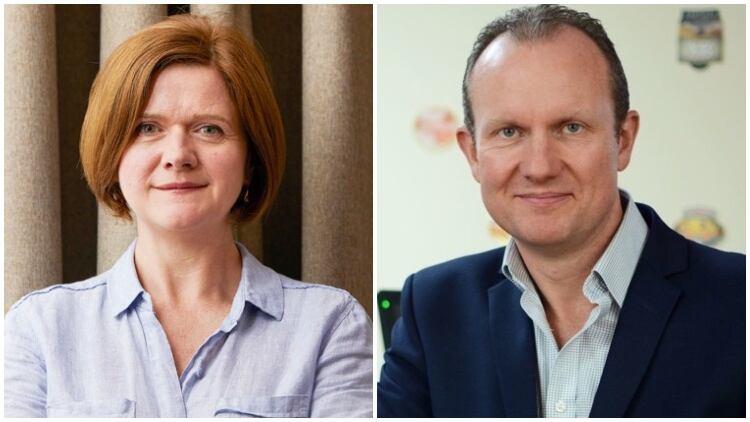
Problematic at very best
Speaking to MA, a number of publicans shared the views of Alton and Nicholls, with verdicts on the feasibility of social distancing while running a profitable business ranging from tricky to simply unworkable.
“I would only be able to have one member of staff behind the bar, so it would be impossible to keep that distance if more than one person was working,” Justine Lorriman of the Royal Dyche in Burnley, Lancashire, explains. “I would have to cut staff hours or find other roles for staff members that could help us operate more safely and efficiently.”
Key facts
- One in three (35%) pub operators say that front-of-house space restrictions are their biggest concern upon reopening
- A third of all pubs and restaurants claim they would become unprofitable if sales dropped more than 10%
- Just 4% of hospitality businesses said they could remain profitable with a 41% or more sales drop
Source: HIM/MCA Insight Hospitality Leaders Poll
On top of this, Lorriman added that she was “not confident” in customers adhering to two-metre social distancing during pub visits. “Toilets are a big worry. You could operate a one in, one out policy, but then do I need to pay a staff member to enforce this and stand on the door entrance to the toilets?
“Every pub can only fit a certain amount of people in and keep to this rule – does that mean we have to pay a staff member to stay on the door and keep count? Make people queue outside like the supermarkets do until someone else has left? I feel like every pub would need an inspection in order to help us figure out ways and ideas to keep our customers safe but also trade as much as we can.”
When asked whether or not he thought a two-metre social distancing policy would be workable in either of his pubs, Piers Baker of Dedham’s Sun Inn and the Church Street Tavern in Colchester, Essex, simply tells MA: “no”.
“It would reduce capacity by half in terms of seated guests and would only allow approximately five people in the front bar at a time,” he continues. “The gap between the front door and the bar counter is only about two metres in itself.”
While Brendan Padfield of the Unruly Pig in Bromeswell, Suffolk – twice winner of the Front of House Team of the Year Award at the Estrella Damm Top 50 Gastropubs – stresses that “anything is possible” when it comes to service, he adds that the Government’s current social distancing guidance would inevitably hit his pub’s bottom line.
“The real issue is whether it will be successful and then whether it will be profitable,” he tells MA. “At the very best, this is going to be problematic and require intensive constant and costly management.
“The biggest issue is that we will need to cut our eating covers by two thirds and yet will have many of the same fixed costs still to meet with less than two thirds of the income. It remains doubtful whether we will able to even cover costs.
“This, of course, assumes the general public are going to have the confidence to go to pubs. Too many polls suggest otherwise. At best, it is going to take many months for the public to return in the numbers we need to make a living, but time is not on our side.”
Claire Alexander of Yubby Inns – operator of Cotswold pair the Ebrington Arms and the Killingworth Castle – concurs that two-metre social distancing wouldn’t leave either of her pubs much chance of breaking even.
“We can’t be expected to operate at 50% – which is what this would mean – while opening up nearly 100% of our overheads,” she says. “We need a minimum of 75% occupancy in our dining rooms, bars and beer gardens or it’s not viable.”
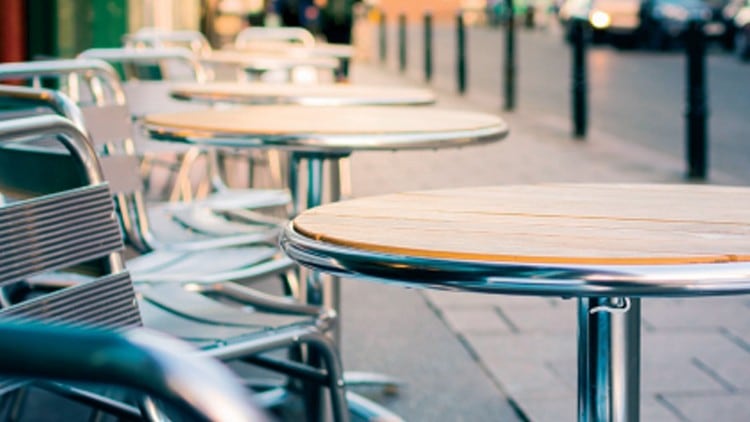
A more precautionary approach than WHO’s definition
Yet while Britain has persevered with two-metre distancing from the outset, a number of countries throughout Europe and further afield have pressed ahead with as much as half our breathing space.
Though the likes of the Czech Republic and the US have similarly kept to two metres – with the former’s pubs now serving customers on open-air gardens and terraces – the likes of Belgium, Holland and Germany have operated under a 1.5m rule, while France and Italy have implemented 1m policies.
What’s more, on 11 May, Bloomberg reported that Denmark had halved its social distancing requirement from two metres to one metre as the county entered its second phase of lockdown recovery.
Populated by 5.5m people, Denmark has registered 529 Covid-19 related deaths as of Sunday 10 May, after responding to the virus with some of Europe’s strictest distancing rules as well as thrashing out legislation including harsh fines and even the option to expel non-compliant immigrants.
Denmark’s latest step brings it into line with World Health Organisation (WHO) guidance, which recommends one-metre social distancing.
“WHO recommends maintaining at least one metre (3ft) distance between yourself and others,” a spokesperson told MA. “Why? When someone coughs, sneezes, or speaks they spray small liquid droplets from their nose or mouth which may contain virus. If you are too close, you can breathe in the droplets, including the Covid-19 virus if the person has the disease.
“National authorities should implement proportionate and appropriate public health measures depending on their own local context and the type of transmission occurring in their areas.”
When asked why the British Government had implemented a social distancing policy double the distance recommended by WHO, a PHE spokesperson told MA: “In the early days of Covid-19 outbreak, PHE adopted a more precautionary approach than WHO’s definition of a close contact.
“As the outbreak continued, we further strengthened the guidance on social distancing and stated that people should maintain a distance of at least two metres.”
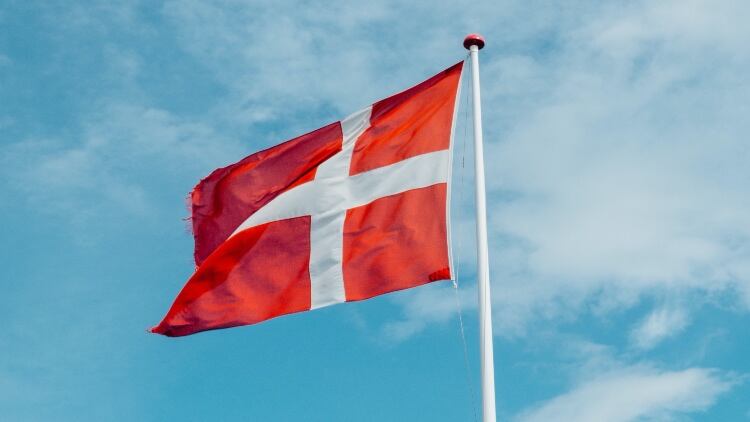
One metre would make a huge difference
But, hypothetically, could Britain choosing to reduce its two-metre policy as Denmark has later in its phased emergence from lockdown make reopening easier for publicans?
“A strict two-metre social distancing requirement would not be viable for the vast majority of pubs,” according to the British Beer & Pub Association chief executive Emma McClarkin. “We believe most pubs wouldn’t be able to open and operate with such conditions and those that tried would find it incredibly costly and impractical to do so.
“Adjusting social distancing requirements to one metre could make it far more feasible for pubs to reopen. We are developing what practical and safe social distancing measures could work in a pub that reflect Government guidance.”
What’s more, a number of operators told MA that an extra metre to play with after lockdown would go a long way in re-establishing their post-pandemic pubs.
“This might just save the UK’s pubs and one of our most precious assets and most valuable contributors to the economy,” Claire Alexander of Yubby Inns says, while Brendan Padfield of the Unruly Pig states: “There is no doubt that one metre would make a huge difference.”
Padfield continues: “To give a practical example, we have nine chefs, on a Saturday night normally we would have up to eight team members in the kitchen.
“We have calculated that at very best we might, with some great difficulty, manage social distancing by having a maximum of three in the kitchen but it is probably only going to be two. What will then happen to the rest of the kitchen brigade? With one metre instead of two, we could probably function pretty much as normal but with some adaptations, of course.”
The Sun Inn’s Baker adds: “One metre for seated guests would be fine, but there has to be some understanding of how transit areas can operate. If we only have one route to loos for instance and it is a corridor, how is a bottleneck and then log jam prevented? We already have about one-metre gaps between most tables and would need to lose around 25% of the tables but it’s certainly a bit more workable.”

Reduction of physical contact
Weighing up the hypothetical adoption of WHO guidance, the CEO of Arc Inspirations, Martin Wolstencroft, tells MA that while slashing social distancing would have a positive impact it would by no means eliminate the challenges they face.
“Reducing that distance would mean our teams can communicate more efficiently with each other but also with the guests,” he explains. “At a two-metre distance in a venue with music and background chatter to compete with, I think there are genuine concerns for the ability for our teams to communicate effectively. Communication will be an imperative part of ensuring our teams and guests are safe and adhere to the measures that are in place to ensure a safe environment.”
What’s more, Wolstencroft argues that a one-metre policy and increased footfall could even reduce the chance of physical contact between staff and customers across Arc Inspiration’s 17 Banyan Bar & Kitchen, Box and Manahatta branded sites.
“A one-metre distance would obviously increase our capacity – which, on the surface, may raise concerns – but with the reduction in queues for the restroom or at the bar may actually reduce physical interaction between staff and guests,” he says.
“As we have looked at how we might reopen with social distancing measures, the flow of our venues and how staff and customers alike move around our venues has emerged as an important factor to consider to ensure a safe environment.
“An increased capacity in our venues may actually increase the efficiency of our service due to the reduction of queues. Shorter queuing times and a more efficient service would decrease the chance of physical interaction between staff and guests and create a safer environment.”
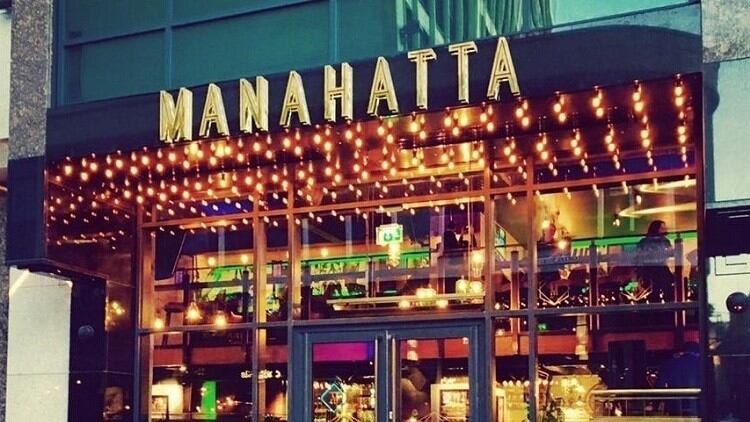
Better safe than sorry
However, a number of industry stakeholders have argued that they would be prepared to wait until a vaccine or health clearance is found before bringing pubs out of lockdown.
“Obviously, the smaller the distance, the easier it will be to operate, but I’d rather be safe than sorry” Calvin Dow of the Castle Inn in Skipton, North Yorkshire, tells MA. “If it means staying closed longer to wait until the virus has started to go or a vaccine is found, so be it.”
What’s more, Derek Gardner, environmental health consultant and director at hospitality health and hygiene consultancy Navitas states that he doesn’t think the difference between one metre and two metres is “particularly relevant.”
“I can’t see that the Government has any way of opening pubs due to the fact that two-metre social distancing would be difficult, if not impossible in a UK pub,” he explained.
“Even if it was reduced to one metre, I don’t believe the Government would countenance this at present or at any time in the near future.
“Due to the nature and design of many pubs, I fear that we may have to wait for a vaccine or a ‘health clearance’ system before pubs specifically are allowed to operate.”
‘Little sympathy’ from enforcing authorities
Yet, regardless of whose advice it is, Andy Grimsey of specialist licensing solicitors Poppleston Allen argues that authorities will very likely take a dim view of any operators acting on distancing advice other than the Government’s.
“As pubs and bars are required by law to be closed – apart from delivery and collection – it will really only be when the regulations are amended to allow them to reopen that we shall see what requirements there are formally to observe any social distancing guidance,” he tells MA.
“Even if there is nothing explicitly about two metres in any pub-related legislation, Covid-19 secure guidance may contain reference to distancing, and our usual advice would stand which is that operators should comply with both the legislation and any accompanying guidance in order to avoid potential enforcement – which, in this case, could include fixed penalties or even a licence review.
“We are all eagerly awaiting the Government’s guidance on how pubs can safely reopen, and I hope it will be both practical and clear, to avoid any confusion or unnecessary enforcement.
“Guidance does not carry the same legal weight as legislation, but I do not believe operators would find much sympathy from enforcing authorities if they chose to comply with WHO guidelines if and when the UK Government issues clear, albeit different, guidelines itself. Much would, of course, depend on the individual facts, however.”
Further reading on social distancing in pubs
- How will the Government’s recovery strategy affect pub staff returning to work? – The Government’s 50-page Covid-19 recovery plan states that ‘at least some’ pubs could open as early as 4 July. But what measures does it suggest could be in place to protect staff when they return to work?
- What could the Government plans mean for customers returning to pubs? – The Government has set out a 50-page plan to emerge from Covid-19 lockdown that includes advice on three distinct phases and social distancing. But what could this mean for returning pub customers?
- What licensing challenges and opportunities should pubs be aware of during lockdown? – Since the Government announced we should avoid non-essential contact and, in particular, confined spaces such as pubs and restaurants, our world of hospitality has changed beyond all recognition.
- What could social distancing in post-pandemic pubs look like? – From potential city-wide open-air café bars to limited capacity and table-service only – how are pubs and bars across the globe planning to reopen under social distancing measures?
- What could the lifting of Covid-19 lockdown around the world mean for UK pubs? – As drinkers tentatively return to bars in mainland China and a number of countries announce cautious plans to emerge from lockdown, what can we glean about how and when pub trading could resume in the UK?
• Read the latest digital edition of The Morning Advertiser – for free – by clicking here.

